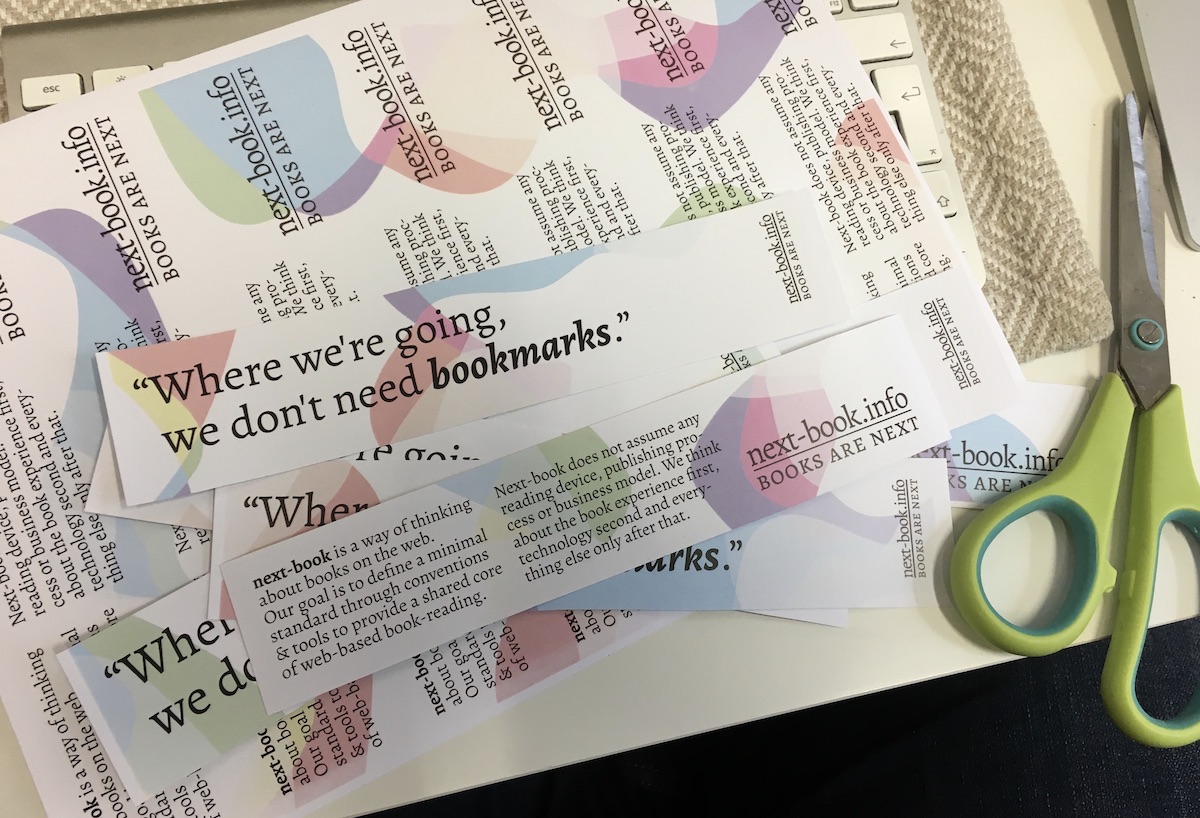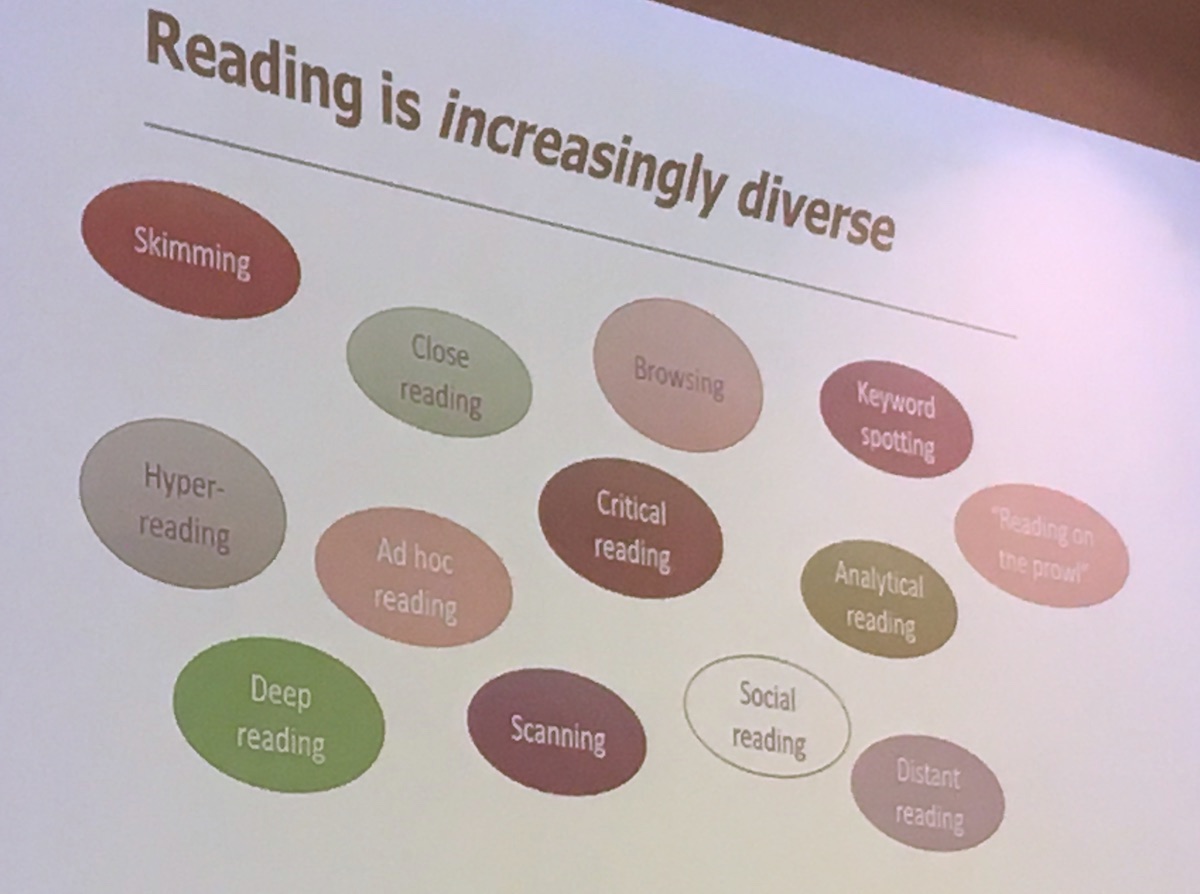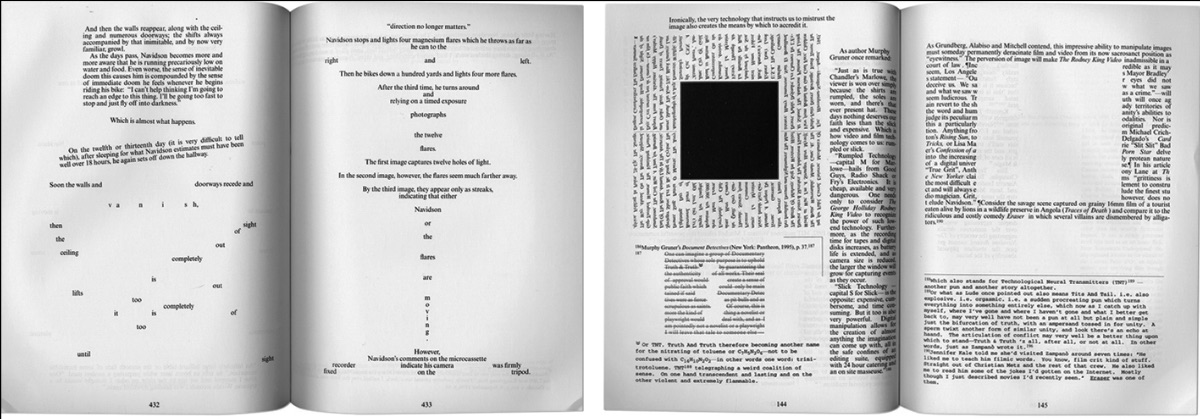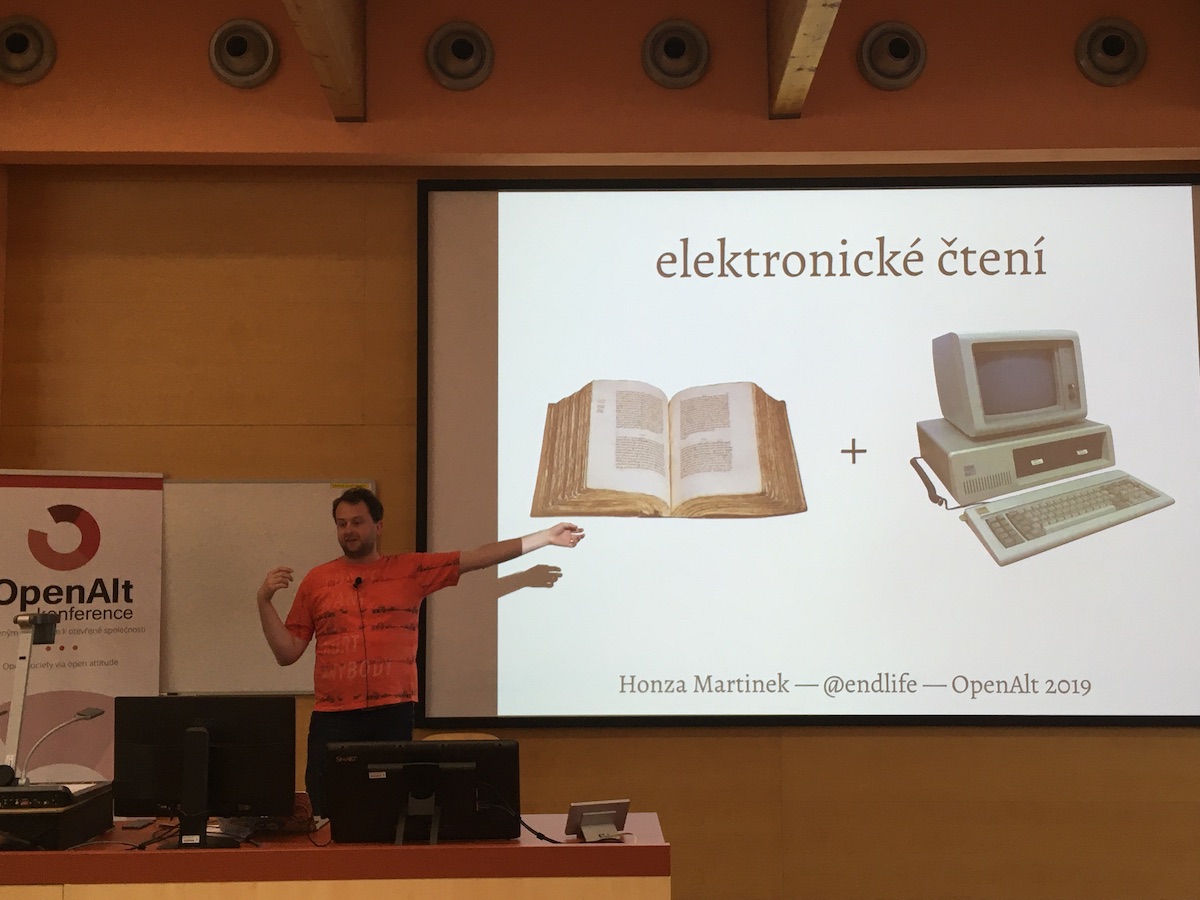Hello!
I’m currently in Regensburg to attend a conference on digital reading — aptly named Reading 2019. I brought a poster that made me articulate the ideas for a new audience—check if it resonates with you in this twitter thread.
Last Saturday I talked about next-book and #eprdctn on the OpenAlt conference in Brno, right after we wrapped up the big project proposal. And then I finally had a chance to work on books again, to actually put together something new and fix bugs found in our internal testing.
However, it’s not ready yet — so here’s one for broken promises: 😓 I can’t include a book in today’s newsletter, as it’s still too buggy. But in two weeks, it will be ready. Complete with a beautiful THIS IS VERY NEW! warning and some useful tips.
Meanwhile… here are three exciting bits from the past two weeks!
Have a nice day!
— Jan

I turn everything I do into arts and crafts experience. I handed out these bookmarks here at the conference instead of biz cards.
1. Reading 2019 (Regensburg, DE)
The full name of today’s conference was Reading in a Digital Environment. The most interesting bits for me were frequent conclusions on posters finding no differences in reading metrics between print and digital — considering how limited the current digital platforms are, it’s surprising. On the other hand, there still seems to be a strong preference for paper when reading any long text. That’s quite understandable.
One methodological issue I found in most of the studies is that display is often considered to be singular medium, often without regard to variation in devices or its software (at most, e-ink devices are their own category). It’s troubling — the affordances provided by various reading environments are in a scientific blind spot.
Read more on this in my (brief) notes from the conference.

A slide form Anne Mangen’s keynote “Reading on Paper and Screens: What Do We Know, and What Should We Know More About?”
2. Samsung, App-store and PWAs
Last time I wrote about the Baker Framework (it’s goal was to publish HTML apps in app stores) and I forgot to mention the important bit from news: Samsung wants to incorporate PWAs into their Galaxy app store.
PWA (Progressive Web App) is a name for a set of technologies that enhance web pages — and some of these are used by next-book: for example, to make the books accessible offline.
Why is Samsung’s move interesting? It makes the web apps accessible through means that the users know: through the app store and then through an icon on their phone. Any next-book could be added in this way and maintain its form as a website.
They’re very much experimenting and the onboarding seems to be pretty manual — and it may go wrong in many ways. But let’s hope it’s a good omen. (Back in 2007, iPhone should have been a web platform, but the web was not ready.)
Read more about this in a Medium post written by Ada Rose Cannon.

Instructions from the post on Medium.”
3. And now for something completely… beautiful
I kept talking about media and technology so far today, so let’s turn a page…
And read Disturbing the Text: Typographic devices in literary fiction, best presented by its author, Zoë Sadokierski:
“In conventional literary fiction, effective typography recedes. Grey rectangles of justified type are so familiar they are essentially invisible on the page, allowing the reader to slip into the world of the book unimpeded by the activity of reading. This article explores ways some novelists use unconventional typography as a literary device, visually interrupting the reader to make a specific point.”

It’s well written, well researched, and well… about something very beautiful. It’s perfect weekend reading.
And I must add: something similar might be achievable with one very specific web publication platform 😉
See you in two weeks!
And thanks for reading this newsletter!

Me introducing the concept of electronic reading at 1987’s OpenAlt conference.